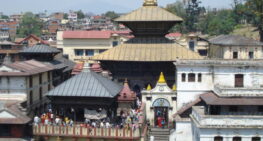Patan City Tour is protected by UNESCO World heritage site. Patan is the second biggest city in Kathmandu valley. Some people called lalitpur, which means city of beauty. Patan Sightseeing is a best on the tour in Kathmandu. It has long Buddhist history and the four corners of the city are distinct by stupas.
Patan’s Central Durbar square is completely packed with temples. Kathmandu valley tour is an architectural feast with a far greater concentration of temples per square meter than in Kathmandu or Bhaktapur. Numerous other temples widely diverse style as well as many Buddhist monasteries are scattered around this fascinating town.
Patan Durbar square tour is a concentrated mass of temples, undoubtedly the most visually stunning display of Newari architecture to be seen in Nepal. There are also many others numerous temples are Krishna. Bhimsen, Taleju Bell, Bhai Dega and others many temples give you more experience about Nepali people faith and respect on religion. All the temples are decorated by numerous arts and architecture. The Patan also offers you Newari people culture and them life style.
Patan city tour is known as ancient city is located on the southern bank of the holy Bagmati River and is something like five kilometers southeast of the capital. The whole city is full of Buddhist monuments and Hindu temples with fine bronze gateways, marvelous statues, guardian deities and magnificent carvings including stone carving, metal carving and wood carving. Well noted for its gorgeous craftsmen and metal workers, it is often known as the city of superb artists. The majority of the citizens follow the Buddhist faith.
However, Kathamndu valley tour is one of the best place for doing tour in Nepal. here has been many artificial old tradition and Carving of wood, Metal and Stone. Inside Kathmandu valley here has been seven different place are recognizing as a world heritage sites by UNESCO. with in this, Patan city tour is one of most and beautiful place and best museum in South Asia.
Sundari Chok- The other courtyard, Sundari chok is very famous for Tusha Hiti, which was Royal Bath. The Royal Bath lies below the ground Level; it is sunken and is decorated beautifully with carved stones. In ancient days or medival times, there were four gates in this city at four different poles. In order to make the city more beautiful the city was segmented in four different Parts: Dipawoli Magar in the east corner, Shilapur Pulchok in the west side, Kumbheshwore at the north side and Lagankhel at the south side.
Hiranya Varna Mahavibar-This three-storeyed golden pagoda of Lokeshwar (Lord Buddha) was built in the twelfth century A.D. by King Bhaskar Varma. Located in the courtyard of Kwabahal, this temple belongs to a class of its own. A golden image of Lord Buddha and a big prayer wheel can be seen on the pedestal of the upper part of the Vihar while intricate decorative patterns, worked out on its outer walls, add charm to the mellow richness of the shrine.
Jagat Narayan-The Jagat Narayan temple is a tall Shikhara-style temple consecrated to Lord Vishnu. The temple is built out of the red bricks on the bank of the Sagmati at Sankharnul and enshrines many stone images. The fine metal statue of Garuda placed on a stone monolith is quite eye-catching along with similarly placed images of Ganesh and Hanuman.
Krishna Temple, Krishna temple is built in the 16th century by late king Siddhi Narsingh Malla, this temple is finished of pure stone. It is a marvelous structure constructed completely out of stone, except for the few pinnacles or the spires accustomed out of metal. The carvings on its friezes depict battle scenes from the ancient Hindu epic of South Asia, the Ramayan and the Maha-Varat in particular. Opposite remains the single stone pillar with a guard sitting on, paying decent homage to Lord Krishna.
Rudra Varna Mahavihar-This is one of Patan’s oldest Buddhist monasteries. Adjacent to the monastery there is a temple that contains a fine image of Lord Buddha. The courtyard of this temple is like a gallery of different bronze and stone art works.
Patan City Tour is Popularly believed, though not scholastically endorsed, to have been built by Ashoka, the Buddhist Emperor of India, these stupas stand at four different corners of Patan giving the whole city a monastic character. All these Buddhist mounds were built in 250 A.D. at the time when Buddhism was making headway to the Kathmandu Valley.
Cost Includes
- Private Car with Air conditioning
- Private English speaking guide
- Entrance fee of Patan Durbar Square
cost excludes
- Shopping, internet, food, extra place entrance fee, extra place touring





